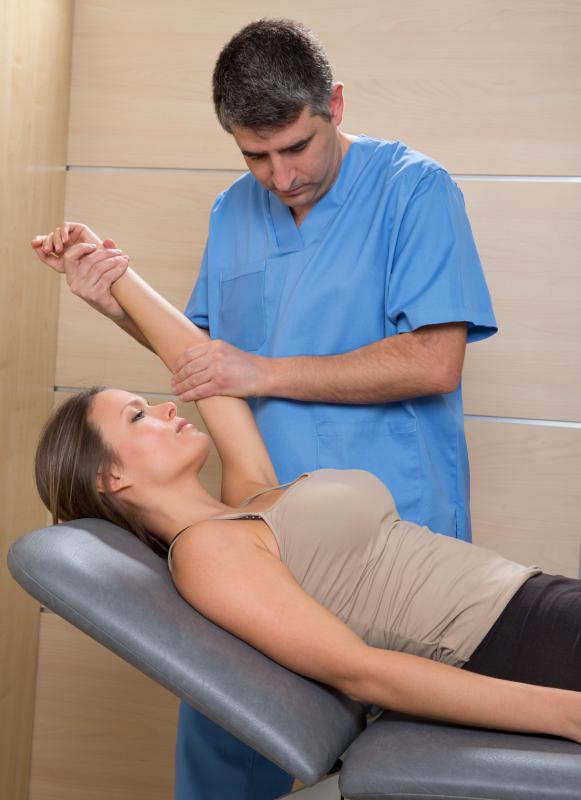At TheHealthBoard, we're committed to delivering accurate, trustworthy information. Our expert-authored content is rigorously fact-checked and sourced from credible authorities. Discover how we uphold the highest standards in providing you with reliable knowledge.
What Is an Internal Rotation?
Also known in anatomy as medial rotation, internal rotation is the rotation of a limb in a joint about a vertical axis toward the anterior or front of the body. A movement that is possible at the shoulder and hip joints, an example of internal rotation would be rotating an arm that is hanging by one’s side in the shoulder joint so that the palm faces backward, or rotating the leg in the hip joint so that the toes turn inward. This movement is performed in opposition to external rotation, in which the limb is rotated outward in the joint as in turning the palm forward or the toes outward. Another part of the body that is capable of these types of rotation is the forearm, which rotates to turn the wrist relative to the elbow in a pair of movements known as pronation and supination.
Internal rotation is defined relative to a fixed body position known as anatomical position. In anatomical position, the body is upright with feet together, arms at the sides, and forearms supinated or palm-forward. This is considered a neutral position; therefore turning the shoulder or rotating the leg inward would be considered a medial rotation relative to anatomical position. Also, since it is a relative movement, it applies whether the body is standing, seated, lying face-up or face-down, or in any other position.

At the hip joint, the muscles that internally rotate the leg are the gluteus minimus and medius on the posterior hip, the tensor fasciae latae on the anterior outer thigh, and several of the adductor muscles on the inner thigh. These muscles are often weak relative to the large number of muscles that pull the leg externally, resulting in a permanently turned-out posture. Exercising the internal rotators with strength-training movements can help restore balance to the hip joint.

Internal rotation at the shoulder joint is a common condition in sedentary populations in which sitting in front of a computer, for instance, causes the shoulders to round forward. The muscles of internal rotation, which include the pectoralis major in the chest, anterior deltoid on the front of the shoulder, latissimus dorsi on the sides of the back, and several rotator cuff muscles, become very tight in this position and create a permanent forward-slumped posture.

Internal rotation is also commonly caused by an imbalanced upper-body strength workout. Exercisers who focus too much on the chest and lats often develop this imbalance, which is indicated by palms that permanently face backward. The imbalance can be corrected by stretching the muscles of internal rotation and strengthening those that pull the shoulders back, the muscles of the upper back.
AS FEATURED ON:
AS FEATURED ON:


















Discuss this Article
Post your comments